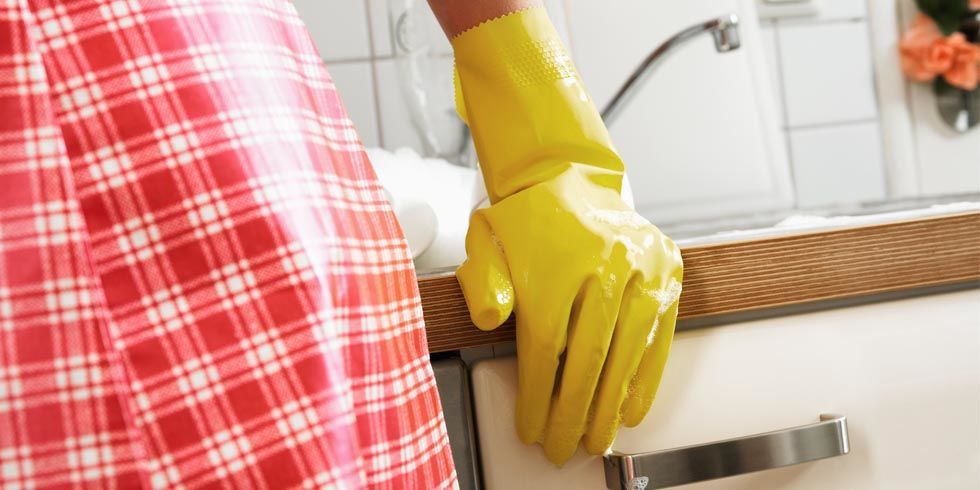Sometimes things that look clean aren’t as clean as they could be — we know, sad. Perhaps your current practices are adding serious wear and tear over time. Or maybe your technique just doesn’t get rid of little things that your eyes don’t notice. Either way, we’re here to offer some serious insight (and solutions!) to these problem spots:
1 You’re not hand-washing some glassware.

If you just toss all of your plates and glasses into your handy dishwasher at the end of the night, wait! Vintage or hand-painted pieces should be hand-washed only. And for newer glasses, you should keep a close watch too: If you start to see the glass “etch” or get an iridescent haze, you should switch to your hands too, according to Carolyn Forte, director of the Cleaning Lab at the Good Housekeeping Institute: “Hard water film can be removed with white vinegar, but etching is permanent.”
2 You’re too organized with your spoons.

Sure, pointing all your utensils in the same direction in your dishwasher might make unloading ’em easier, but there’s a chance they won’t be as clean. “Spoons should be loaded with some up and some down in the dishwasher’s flatware basket to keep them from nesting,” says Forte. If they do nest, there’s a chance some of the gunk won’t get be exposed to the cleaning cycle (yuck).
3 You let your cast-iron pots air dry.

You probably already know that under no circumstance should you put this pan in the dishwasher. And if there is burnt-on food stuck to the sides, use baking soda to remove it. But one thing you might not know? You should always hand-dry your pan to remove all liquid and prevent rust. But don’t worry: If you’ve been forgetting this important step, our cleaning guru Heloise says you can fix it with a sponge and mild soap.
4 You’re using an all-purpose cleaner on stainless steel.

You might think your all-purpose cleaner is doing a fine enough job keeping your faucet, refrigerator, and stovetop clean, but Forte says you should skip it, along with dish soap. “Use a cleaner made specifically for stainless steel, like Good Housekeeping Seal holder Weiman.” Then. wipe in the direction of the metal’s grain and buff well to remove fingerprints and avoid streaks. Voila! An even cleaner, shinier surface.
5 You’re only using dish soap on cutting boards.

Sometimes scrubbing your cutting board down with warm water and soap after cooking doesn’t cut it. According to Sharon Franke, director of the Kitchen Appliances and Technology Lab at the Good Housekeeping Institute, there’s an extra step you might be forgetting: “After used it to cut raw meat or poultry, always soak it in a bleach solution.” This will prevent cross-contamination in your next cooking endeavor.
6 You’re not cleaning the whole coffee maker.

People don’t realize how dirty these appliances are and how rinsing them isn’t enough, says Forte: “They need to be washed in soap and water to remove coffee oils.” Every time you brew a cup (so every day?), you should wash all removable parts with warm water and soap and wipe down the outside. Then, don’t forget to descale the inside once a month.
7 You’re ignoring the garbage disposal.

Raise your hand if you knew you needed to clean this bad boy? Thought so. To keep it smelling fresh it only takes periodic maintenance, says Forte, “You can grind up ice or citrus peels to help clean the blades and remove odor.” And please, whatever you do, don’t let food sit in there — flush it regularly.
8 You’re beating up your knives.
Consider these sharp utensils your dishwasher’s frenemy: While you’re right that fine knives are dishwasher safe (unless they have wooden handles, which could warp in the hot water), it might not be worth it, according to Franke. “They can nick the shelves, be difficult to remove without cutting yourself, and nick glasses if they shift around,” she warns. Suddenly hand-washing ’em with soap and warm water doesn’t sound so bad.












